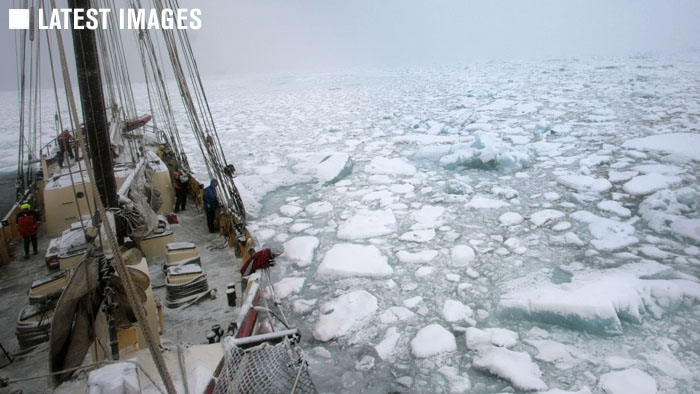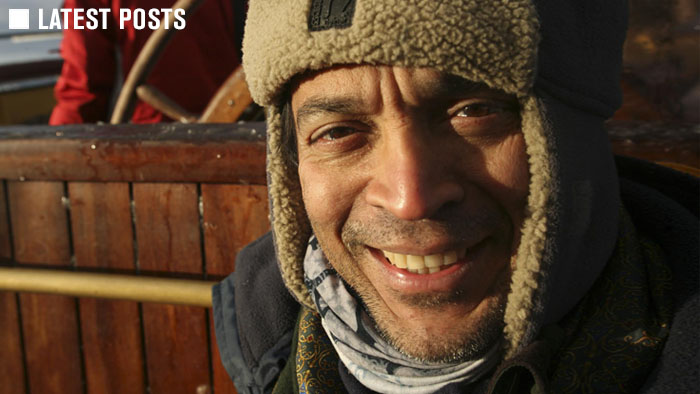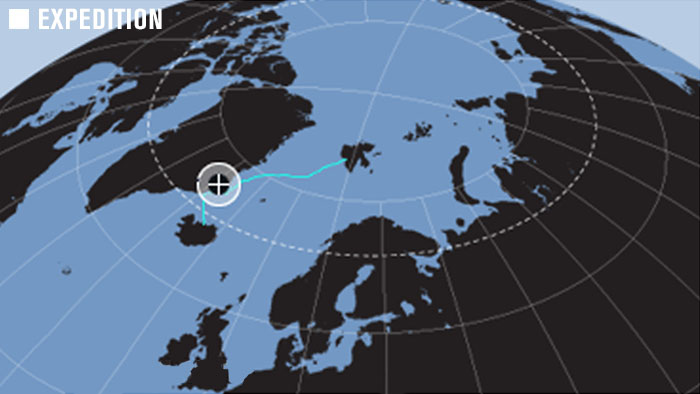The Snap Freeze
By Ben // Wednesday 3 Oct // 20:25:01 // 2 Comments // View
[photopress:EV_ben_jervey.jpg,full,pp_image]
Before delving into today’s installment of Something Spectacular That Is Probably Impossible To Experience Anywhere Else, I should probably mention that we didn’t wind up in Scoresby Sund. Rather we’re settled into the coast just south, Blosseville Kyst, fjord hopping our way down. Having spent the first night in Deichmann fjord, we swung around the point to Turner Sound, tucked behind Turner Island. Here we experienced the aforementioned S.S.T.I.P.I.T.E.A.E.
Which was: a snap freeze. Now I’ll implore you to check out the posts from the Science Team for a much better description of exactly what this is. But here’s how I experienced it: the boat circled through a spot in the Sound where thin, wispy crystals of ice were barely scattering the surface. After completing a loop, Beth (thankfully) asked for a second pass, during which the Noorderlicht was breaking through ice probably 2 inches thick, where just 15-20 minutes earlier it had been nearly pure liquid. Simon guessed that by morning it’d be about 3-4 feet thick.
And that’s why we’ve got to pay attention to where we park.
I think there’s some video I took floating somewhere on the site as well of the freeze, and the Science Team’s reaction. Check it.
Representative quote of the day:
“Noorderlicht, the icebreaker!” –Renska, digging the snap freeze.
“Not in 35 or 40 years in the field have I seen it.” –Simon, also digging the snap freeze.
Read Full Post » Tags: Ben Jervey



